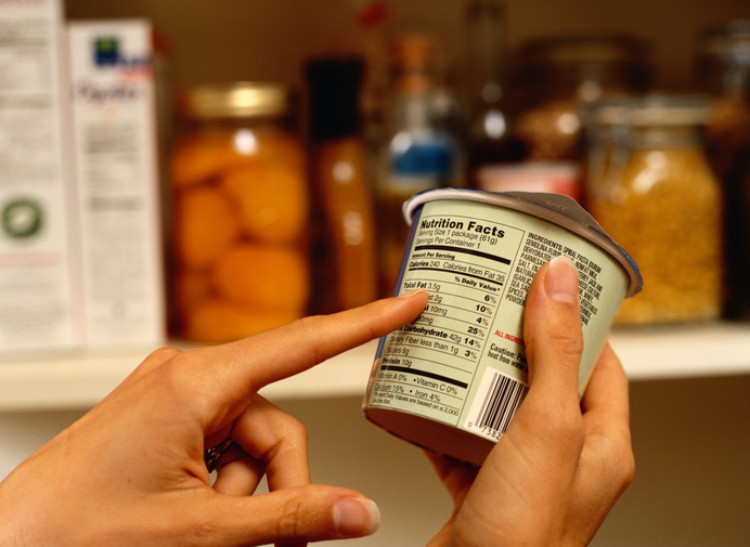What is food poisoning and dirty hands disease? (+ symptoms and first aid)

Even a common activity such as preparing and eating food can be quite poisoning. The ubiquitous bacteria, viruses and parasites are waiting for their opportunity to multiply and cause problems. It only takes a little carelessness or carelessness to get them into our bodies. They can cause a variety of problems in the human body, from banal, spontaneously receding to serious damage to health. How to avoid such food poisoning and what is "dirty hands disease"?
Article content
- Food poisoning. What does that mean?
- Microorganisms that like to poison us
- Bacterial infections
- Viral infections
- Parasitic infections
- Symptoms of food poisoning
- Food poisoning in children. Beware, dehydration occurs quickly!
- How and where can you get infected?
- How to prevent food poisoning?
- Treating foodborne illness and first aid
Food poisoning is the vernacular and collective name for various infections that originate from food contaminated with microorganisms. It is more common than it may seem at first sight.
Everyone has certainly experienced, more than once, vomiting, crampy abdominal pain or diarrhea after eating.
Some also know what it is like to writhe in pain and sit on the toilet all day because of persistent diarrhea and vomiting. Combined with high temperatures, shivering and other symptoms, it is actually a very unpleasant condition.
Food poisoning. What does that mean?
Food poisoning is not poisoning in the true sense of the word. In fact, it is not intoxication, but contracting infections after eating food that has been contaminated (colonized) with microorganisms or toxins from microorganisms, metals and other poisonous substances.
In most cases, these are bacterial infections, less often viral or even parasitic. These pathogens can also turn ordinary food into a health hazard.
Methods of foodborne illness
- Primary contamination - poorly stored food is exposed to external influences, spoils, rots and harbours micro-organisms
- Secondary contamination - fresh and well stored food is secondarily contaminated, for example during food preparation

Contamination enters the human body via the parenteral route, i.e. through the mouth. The source of infection is the primary or secondary contaminated food mentioned above, but also objects such as spoons, forks, glasses.
Secondary food poisoning occurs most often in the food industry. A worker who handles food (fast food, ice cream maker) and does not use protective equipment at work (gloves) can contaminate food with bacteria from his/her hands.
It is also possible to become infected by direct contact with another person. This person does not have to be sick or even a carrier of the disease. The pathogen on the surface of his skin is transferred to the skin of another person by touch.
If he does not wash his hands sufficiently and then eats the food, he can easily become infected. We are talking about so-called dirty hands disease. However, several diseases are referred to by this term.
Microorganisms that like to poison us
Food poisoning differs on the basis of the pathogen causing the disease, as well as the incubation period and clinical picture. However, the most common pathogen causing food poisoning is bacteria and their toxins. To a lesser extent, viruses and parasites can also cause it.
Interesting:
There are countless bacteria of various kinds living in and on the human body. Together they weigh about 1.5 kg in an adult.
Bacterial infections
They are the most common cause of food poisoning. Bacteria multiply almost everywhere. Directly in food, on food packaging, on shells, on hands, on objects. They can "poison" food directly and indirectly. They cause health problems ranging from mild to severe.
Salmonellosis and typhoid fever
Salmonellosis and typhoid fe ver are bacterial, diarrhoeal diseases caused by Salmonella bacteria. They are among the most common infectious diseases of the digestive tract.
The source of infection is the diseased animal and its inadequately processed products. The infection enters the body through the mouth.
The most risky foods are animal products such as meat, milk, cheese, eggs, ice cream. It manifests itself in vomiting, green diarrhoea, abdominal pain, fever, weakness.
Infections caused by E. coli
This is a bacterial disease caused by Escherichia coli. Most of its strains are harmless, but others can be troublesome.
The gateway is the gastrointestinal tract, after consuming mainly beef, sheep and goat meat, unpasteurised milk. It is found mainly in hamburgers, dairy products, juices and water. It causes a clinical picture of varying intensity, ranging from common diarrhoea to bloody diarrhoea.
Campylobacter infections
This is a relatively common bacterial disease caused by Campylobacter. It enters the body through the digestive tract.
It is found in contaminated water, in livestock products, mainly raw or undercooked meat and dairy products. It manifests itself in severe crampy abdominal pain, bloody mucus diarrhoea.
Shigellosis
Shigellosis is a bacterial disease caused by the Shigella bacterium. This disease is transmitted to humans through dirty hands. The entry point is the mouth. It is also popularly known as 'dirty hands disease'.
It manifests itself with high fevers, dry mouth and mucous membranes, abdominal pain, severe diarrhoea often leading to dehydration.
Listeriosis
Listeriosis is a bacterial disease caused by the bacteria Listeria monocytogens and ivanovii, with a serious prognosis. Left untreated or treated late, it can be fatal.
Humans are most often infected by contaminated and inadequately prepared food. Listeria is found mainly in meat and dairy products.
It causes febrile states, severe sepsis, meningitis, enteritis, tonsillitis. In pregnant women, it causes miscarriage, stillbirth. In the newborn, it causes mental retardation and epilepsy.
Toxin infections
Toxin food poisoning includes infections caused by toxins from microorganisms, metals and other poisonous substances. The most well-known toxin poisonings are botulinum toxin and golden staph toxin.
Botulinum toxin poisoning
Botulinum toxin poisoning is caused by a toxin produced by the bacterium Clostridium botulinum. It is found freely in soil and water sediment. When food comes into contact with soil or water, contamination occurs. Its presence can be eliminated by boiling (temperature 120 °C for at least 20 min).
Foods at risk are those that are hermetically sealed, for example in cans, foil and other airtight packaging. The cans should contain sufficient preservatives to prevent the germination of spores. Repeated boiling or pasteurisation is sometimes necessary to destroy spores present in these packages.
The presence of Clostridia and the activity of one of its toxins (there are 7 species) is manifested by bombardment. Bombardment is the accumulation of the resulting gas in the packaging. The packaging becomes inflated and the lids are seen to bulge.
It is also found in undercooked meat, poorly smoked and fermented meat and fish, seafood, poorly cleaned fruit and vegetables, juices and even honey.
Botulinum toxin is considered to be the most toxic substance in the world to date and causes the disease botulism. The incubation period is 24 to 72 hours.
It is manifested by indigestion, sweating, dry mucous membranes, dilated pupils, drooping eyelids, swallowing disorders, loss of voice. Gradually, neurological symptoms increase in intensity, paralysis and visual disturbances occur.
Interesting:
Botulinum toxin, the most dangerous toxin in the world, with its extreme potency, high mortality rate and as yet non-existent antidote, is a potential biological weapon. The danger is compounded by its easy availability.
Poisoning by golden staphylococcus toxin
Gold staphylococcus toxin poisoning is one of the most common food poisonings. Its contamination occurs through overgrowth of the bacterium in food, dirty and poorly washed hands or poor storage of food in contaminated areas.
Staphylococcus bacteria are also naturally found on the skin and mucous membranes of humans. This is why the incidence of infection is so high. In summer, the risk is higher because staphylococci thrive better in the heat.
Staphylococci are well resistant to low temperatures. They can be destroyed by boiling. The boiling temperature should be 60 °C to destroy the bacteria and about 100 °C to destroy the toxins.
Foods at risk are meat products (minced and smoked meat), fish, dairy products (milk, cheese, mayonnaise, ice cream, whipped cream), cream candy. However, despite sufficient boiling and destruction of the bacterium, food may become contaminated secondarily (contaminated objects, hands).
The most well-known toxin is enterotoxin B, which attacks the intestinal mucosa and causes staphylococcal enterotoxicosis. After an incubation period of 1 to 6 hours, rapid onset of disease occurs.
The disease is manifested by nausea, vomiting. Intestinal movements accelerate, leading to severe diarrhoea and crampy abdominal pain without fever. In two days, the condition corrects spontaneously.
Interesting:
Diarrhoea is considered a kind of communication, defensive barrier between the human intestinal microflora and the staphylococcus. The natural bacteria in the human body try to flush out unnatural pathogens. Therefore, it is not advisable to administer antidiarrhoeal drugs for the first 2 days, it is enough to rehydrate the body with fluids. Diarrhoea should be treated only on the 3rd day.
Viral infections
They are less frequent compared to bacterial causes of poisoning. Norovirus infections affecting adults are the most common, followed by rotavirus infections affecting mainly young children. They spread rapidly in collective settings.
Norovirus infections
Noroviruses are viruses that are highly resistant to external influences. They are found worldwide and are the cause of most viral gastroenteritis. They enter the body through the mouth via dirty hands and objects or through secondarily contaminated food.
The incubation period is 12 to 48 hours. They present with nausea, vomiting, diarrhoea, abdominal pain. Fever, headache and muscle aches are associated only in some cases.
Rotavirus infections
Rotaviruses are aggressive viruses that cause severe gastroenteritis. They enter the body through the mouth (food, water, dirty hands).
The incubation period is 1 to 2 days. The condition is manifested by nausea, vomiting, severe diarrhoea, abdominal pain, fever. The fever subsides after about 3 days, the diarrhoea persists for about a week. Young children from 5 months to 6 years are mainly at risk.
Parasitic infections
Some physicians omit parasitic food poisoning from the overall classification of causative agents. This absence is justified precisely because of its rarity.
The incidence is slightly higher in developing countries.
After consumption of food contaminated with a parasite, the first symptoms usually appear after 10 days. This includes diseases such as amoebiasis, giardiasis, echinococcosis, cryptosporidiosis, trichinellosis.
All the pitfalls of summer in the magazine article:
Our health in summer? Sun, heat, injuries and diseases, what to look out for
Symptoms of food poisoning
Food poisoning is an unnoticeable phenomenon. It makes itself known quite quickly and usually resolves spontaneously. In some cases it is necessary to seek medical attention. It is the symptoms of poisoning that alert us to it.
The symptoms of food poisoning are largely the same for different pathogens. The main differences are in the incubation period, at least in the clinical picture. The causative agents of the disease can be detected by blood tests or microbiological examination of the faeces.

General clinical picture of foodborne diseases
- Nausea
- nausea
- vomiting
- inappetence
- stomach pain
- crampy pain all over the abdomen
- persistent diarrhoea
- sweating
- headaches
- muscle aches
- weakness
- malaise
- fatigue
- shivering, chills
- fever depending on the causative agent
Food poisoning in children. Beware, dehydration occurs quickly!
In children, the symptoms are identical to those of adults. However, children are more vulnerable and bear the disease more easily. Fluid loss is especially dangerous in our little ones.
Sweating, vomiting, diarrhoea are all phenomena that result in dehydration. It can cause disorientation and delirium in the baby, excessive sleepiness, exhaustion and fatigue. The blood pressure drops, the heart beats faster than the body's defensive reaction to the reduced fluid volume.
If fluids are not delivered through the mouth, or in more severe cases through a vein, shock can occur. Shock causes multi-organ failure and death from dehydration. However, this is an extreme case, most food poisoning is well managed.
How and where can you get infected?
Food poisoning occurs when pathogens overgrow in food.
Or...
Secondary introduction into food through dirty hands or contaminated objects.
Proper food storage and preparation minimizes the risk of food poisoning. This is true, of course, when preparing food in the home.
Although food from factory kitchens, restaurants or fast food outlets is subject to strict hygiene controls, there is still the possibility of contamination. It depends on the level of hygiene standards in the particular location.
Poisonings are usually rather sporadic and solvable.
In the event of a large number of people contracting an unknown infection, the symptoms of which are largely the same as those of food poisoning, the first-contact doctor should inform the authorities of the situation. They should then re-inspect the particular catering establishment to ensure that the infection does not spread further.
When does food contamination occur?
- the food is contaminated before production (e.g. an infected animal)
- during the production phase
- during the packaging process
- during transport
- during storage (store, shop, household)
- any handling of the food (cross-contamination)
- during the processing of food preparation
- inadequate food preparation
- during consumption (dirty hands disease)
How to prevent food poisoning?
Food poisoning is best prevented by proper hygiene standards, storage, handling and preparation of food. It is not complicated, you just need to keep these principles in mind. This way, unpleasant, health problems can be avoided.

- good hygiene habits (hand washing)
- proper food storage (fridge, freezer, box)
- avoiding cross-contamination
- eating food before the expiry date
- eating non-perishable food
- adequate cleaning of food before preparation
- sufficient cleaning of the food preparation equipment
- sufficient cooking of food (correct boiling temperature)
- minimising leaving food out of refrigeration for long periods of time
- minimising eating in public catering units
Treating foodborne illness and first aid
Vomiting and diarrhea can also individually cause dehydration of the body. Together they lead to it more quickly.
The most important thing is to rehydrate the patient. Because of the lack of appetite and the feeling of vomiting, this is only possible after small sips of water. This is the most important first aid principle. Do not stop drinking fluids.
Of course, if a person vomits after drinking even a small amount of water, a professional examination is necessary.
Do not delay.
Dehydration can occur quickly, especially in children and the elderly.
Read also:
What is the correct diet for diarrhea, constipation or vomiting? How to stop them?
If the condition allows it, it is advisable to get at least some food into the patient to regain strength. The most suitable are biscuits, potatoes or a banana.
In more severe cases, antibiotic or antiviral treatment is necessary.
Symptoms can be managed with painkillers, fever, vomiting and, from day 3, anti-diarrhoeal drugs. However, the condition resolves spontaneously in most cases.
Hospitalization is only necessary in severe cases of poisoning in the elderly and young children.










